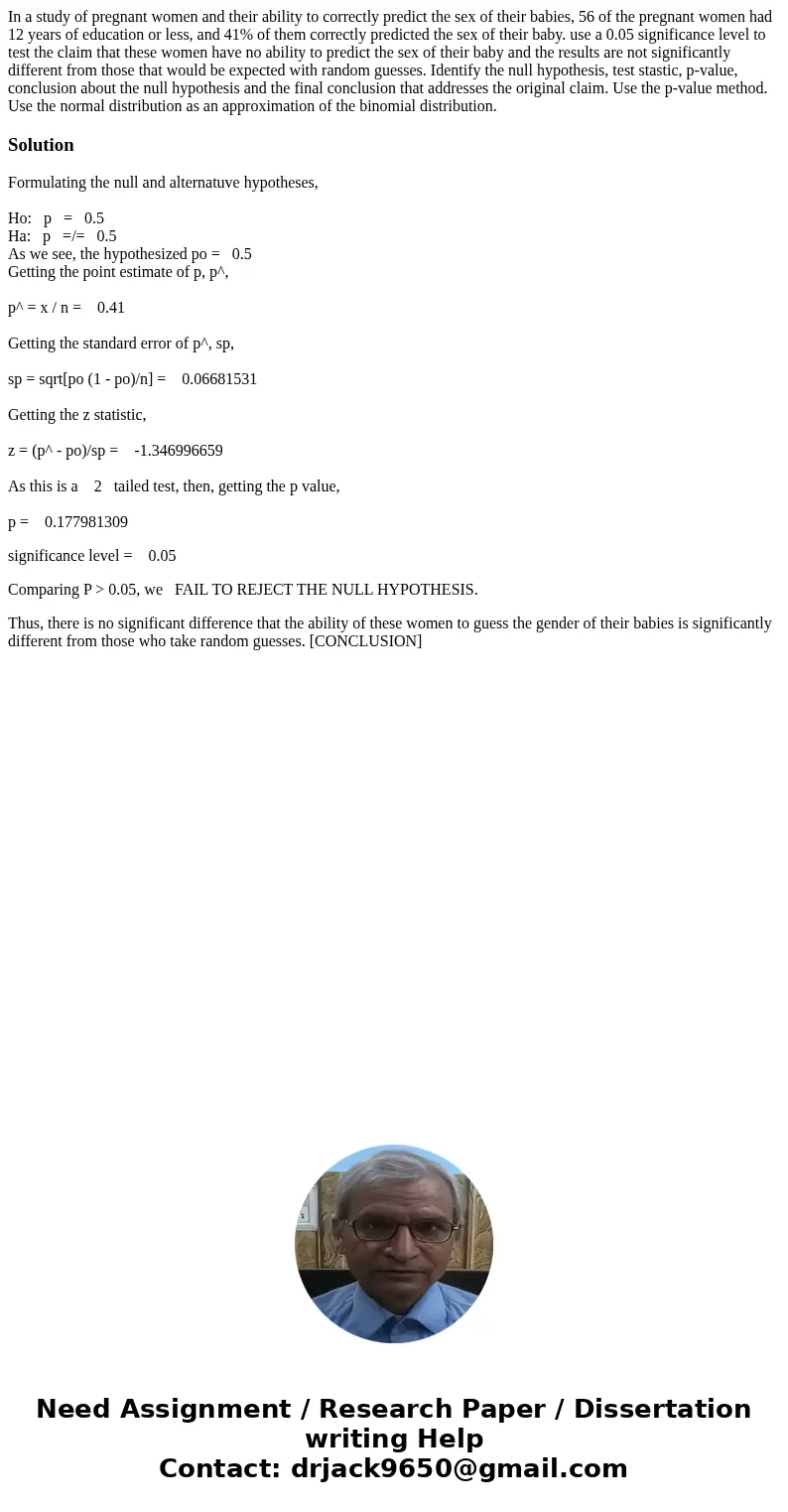In a study of pregnant women and their ability to correctly
In a study of pregnant women and their ability to correctly predict the sex of their babies, 56 of the pregnant women had 12 years of education or less, and 41% of them correctly predicted the sex of their baby. use a 0.05 significance level to test the claim that these women have no ability to predict the sex of their baby and the results are not significantly different from those that would be expected with random guesses. Identify the null hypothesis, test stastic, p-value, conclusion about the null hypothesis and the final conclusion that addresses the original claim. Use the p-value method. Use the normal distribution as an approximation of the binomial distribution.
Solution
Formulating the null and alternatuve hypotheses,
Ho: p = 0.5
Ha: p =/= 0.5
As we see, the hypothesized po = 0.5
Getting the point estimate of p, p^,
p^ = x / n = 0.41
Getting the standard error of p^, sp,
sp = sqrt[po (1 - po)/n] = 0.06681531
Getting the z statistic,
z = (p^ - po)/sp = -1.346996659
As this is a 2 tailed test, then, getting the p value,
p = 0.177981309
significance level = 0.05
Comparing P > 0.05, we FAIL TO REJECT THE NULL HYPOTHESIS.
Thus, there is no significant difference that the ability of these women to guess the gender of their babies is significantly different from those who take random guesses. [CONCLUSION]

 Homework Sourse
Homework Sourse